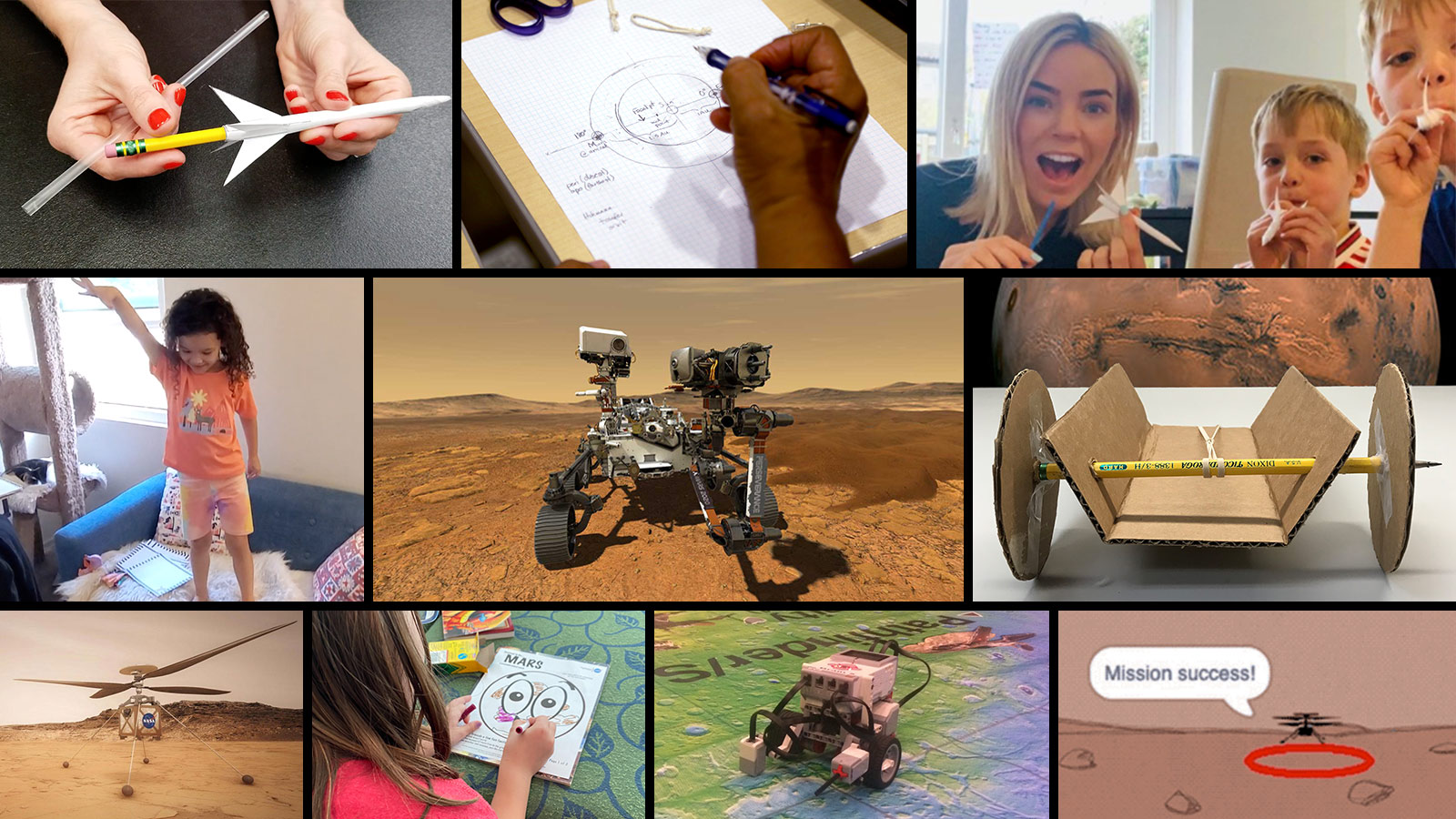The rover touches down on the Red Planet next month, and students are invited to join the excitement by designing, building, and landing their own Mars mission. NASA can help.
On Feb. 18, NASA will attempt to land the Mars 2020 Perseverance rover on the surface of the Red Planet, and you can join the excitement with NASA’s Mission to Mars Student Challenge. Classrooms, informal education groups, families, and individuals can design, build, and land their own spacecraft – just like NASA scientists and engineers do. And for extra inspiration, there’s the handy Mars 2020 STEM toolkit filled with activities, videos, and more.
“We want to reach every classroom in America and beyond with the Mission to Mars Student Challenge. We want to share the not just the thrills of the Mars 2020 Perseverance landing itself but also what goes into making achievements like these possible,” said Thomas Zurbuchen, associate administrator of NASA’s Science Mission Directorate in Washington. “We hope that students will be inspired by the Perseverance mission and one day become our next generation of NASA scientists and engineers.”
About the size of an SUV, Perseverance is carrying the small Ingenuity Mars Helicopter on its belly. While the helicopter is an experiment designed to attempt the first powered, controlled flight on another planet, it doesn’t play a role in the science that Perseverance will be conducting. A key goal of the rover’s mission is astrobiology, including the search for signs of ancient microbial life. Perseverance will characterize the planet’s geology and past climate, pave the way for human exploration of the Red Planet, and be the first mission to collect samples of Martian rock as well as regolith, which is broken rock and dust.
To do that, the rover first must land, and landing on Mars is hard. Only about half of all attempts by the world’s space agencies have succeeded – all of them by NASA. The last time a rover landed on the Red Planet was in 2012, with NASA’s Curiosity rover.
Like Curiosity, Perseverance must survive the “seven minutes of terror” – a fiery trip through the Martian atmosphere using a heat shield, parachute, and rockets. During the sky crane maneuver, the descent stage will lower the rover onto Mars with nylon cables.
But this latest landing involves an even higher level of difficulty: The most sophisticated rover ever built, Perseverance is the biggest and heaviest to attempt a Mars landing. And it will be testing new technologies as it touches down.
More About the Challenge
By participating in the Mission to Mars Student Challenge, you can land your own rover, too. Activities include:
- A flexible, guided five-week education plan for elementary, middle, and high school students with standards-aligned STEM lessons and activities from NASA.
- A weekly newsletter with links to tips and resources related to the mission phase of the week.
- Video conversations with mission scientists and engineers highlighting how their work relates to what students are learning – plus, ideas to kick-start the weekly challenge.
- Opportunities to participate in Q&As with mission experts and to submit student questions and work that could be featured during NASA broadcasts leading up to and on landing day.
With the STEM toolkit in hand, you can learn more about the mission and have some fun while you’re at it. You’ll find:
- Stories on the students who named Perseverance and Ingenuity.
- Crisp animations highlighting the rover and helicopter.
- Opportunities to code your own Mars-exploration games.
- Make space-themed crafts.
- And much, much more.
“The Mission to Mars Student Challenge provides a fun and engaging way for students everywhere to get excited and learn about this momentous landing on Mars and join NASA as we land on the Red Planet,” said Ota Lutz, who leads the STEM Elementary and Secondary Education Group at NASA’s Jet Propulsion Laboratory in Southern California. “The challenge will feature fun and engaging activities for younger and older students, who will have an opportunity to ask questions of NASA experts and have their work shared with a worldwide audience.”
You can watch the landing events broadcast live on NASA Television and the agency’s website, starting at 2:15 p.m. EST (11:15 a.m. PST) on Feb. 18, in English and Spanish. Touch down will take place at about 3:55 p.m. EST (12:55 p.m. PST).
Do your students have questions about the mission? Share them on the Challenge website, and they may be read live during a NASA broadcast.
To read more about the Challenge:
https://go.nasa.gov/mars-challenge
To learn more about Perseverance:
https://mars.nasa.gov/mars2020/
Matthew Segal
Jet Propulsion Laboratory, Pasadena, Calif.
818-354-8307
matthew.j.segal@jpl.nasa.gov
2021-004




























